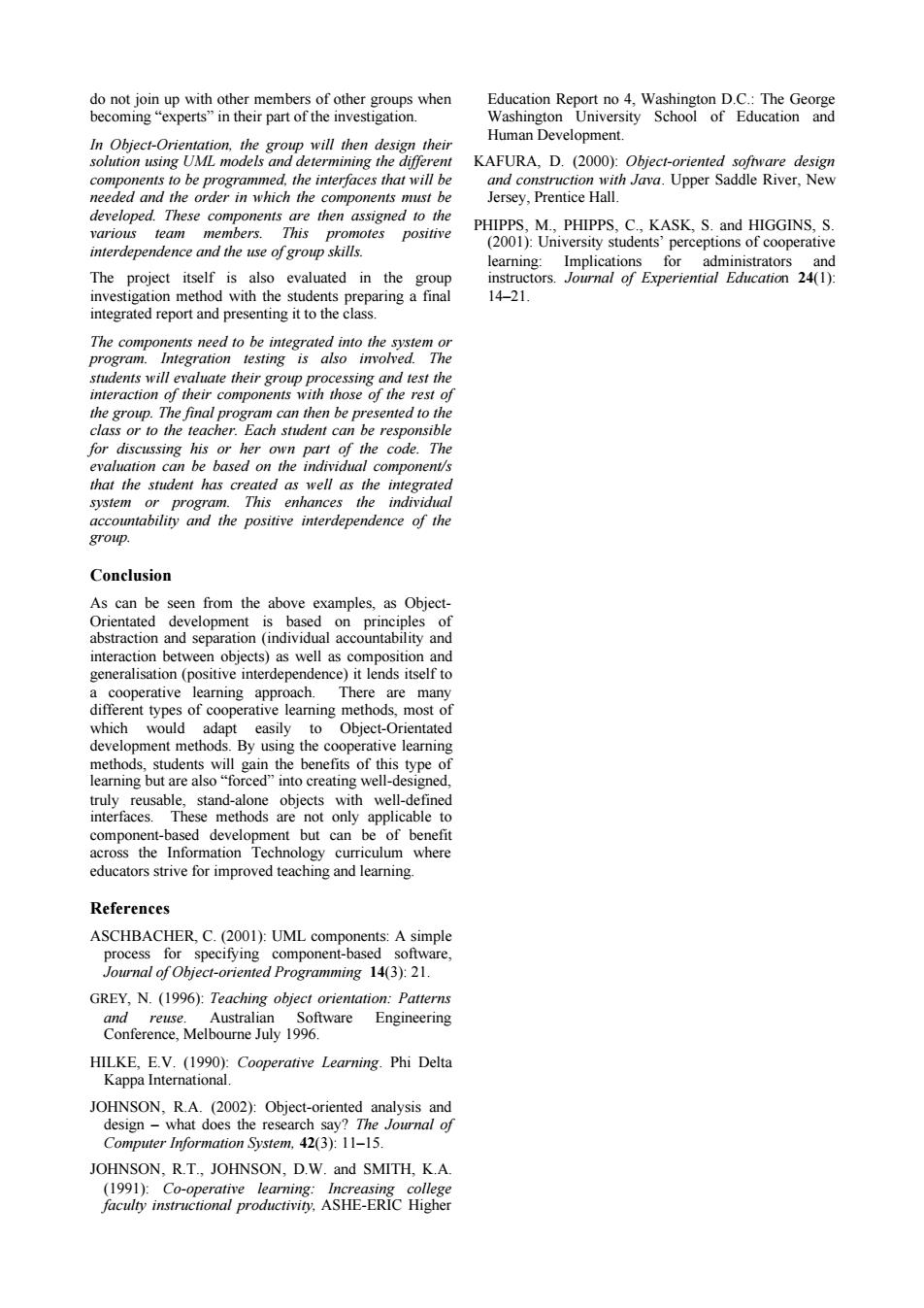正在加载图片...

dohrmmboohuwhen ashingron Uscho Cuc aohecORonnts8m2enhkegne Human Development. KAFURA D (2000 O6 2 his o component/ Conclusion As can be seen from the above examples.as Obiec on and interaction between objects)as well as composition oach. most o eheteiootoeeeoehPec co none nt-ba sed develop References GREY,N.(1996):Teaching object orientation:Patterns Computer Information System.42(3):11-15. JOHNSON,R.T.,JOHNSON,D.W.and SMITH,K.A AsHe-ic do not join up with other members of other groups when becoming “experts” in their part of the investigation. In Object-Orientation, the group will then design their solution using UML models and determining the different components to be programmed, the interfaces that will be needed and the order in which the components must be developed. These components are then assigned to the various team members. This promotes positive interdependence and the use of group skills. The project itself is also evaluated in the group investigation method with the students preparing a final integrated report and presenting it to the class. The components need to be integrated into the system or program. Integration testing is also involved. The students will evaluate their group processing and test the interaction of their components with those of the rest of the group. The final program can then be presented to the class or to the teacher. Each student can be responsible for discussing his or her own part of the code. The evaluation can be based on the individual component/s that the student has created as well as the integrated system or program. This enhances the individual accountability and the positive interdependence of the group. Conclusion As can be seen from the above examples, as ObjectOrientated development is based on principles of abstraction and separation (individual accountability and interaction between objects) as well as composition and generalisation (positive interdependence) it lends itself to a cooperative learning approach. There are many different types of cooperative learning methods, most of which would adapt easily to Object-Orientated development methods. By using the cooperative learning methods, students will gain the benefits of this type of learning but are also “forced” into creating well-designed, truly reusable, stand-alone objects with well-defined interfaces. These methods are not only applicable to component-based development but can be of benefit across the Information Technology curriculum where educators strive for improved teaching and learning. References ASCHBACHER, C. (2001): UML components: A simple process for specifying component-based software, Journal of Object-oriented Programming 14(3): 21. GREY, N. (1996): Teaching object orientation: Patterns and reuse. Australian Software Engineering Conference, Melbourne July 1996. HILKE, E.V. (1990): Cooperative Learning. Phi Delta Kappa International. JOHNSON, R.A. (2002): Object-oriented analysis and design – what does the research say? The Journal of Computer Information System, 42(3): 11–15. JOHNSON, R.T., JOHNSON, D.W. and SMITH, K.A. (1991): Co-operative learning: Increasing college faculty instructional productivity, ASHE-ERIC Higher Education Report no 4, Washington D.C.: The George Washington University School of Education and Human Development. KAFURA, D. (2000): Object-oriented software design and construction with Java. Upper Saddle River, New Jersey, Prentice Hall. PHIPPS, M., PHIPPS, C., KASK, S. and HIGGINS, S. (2001): University students’ perceptions of cooperative learning: Implications for administrators and instructors. Journal of Experiential Education 24(1): 14–21